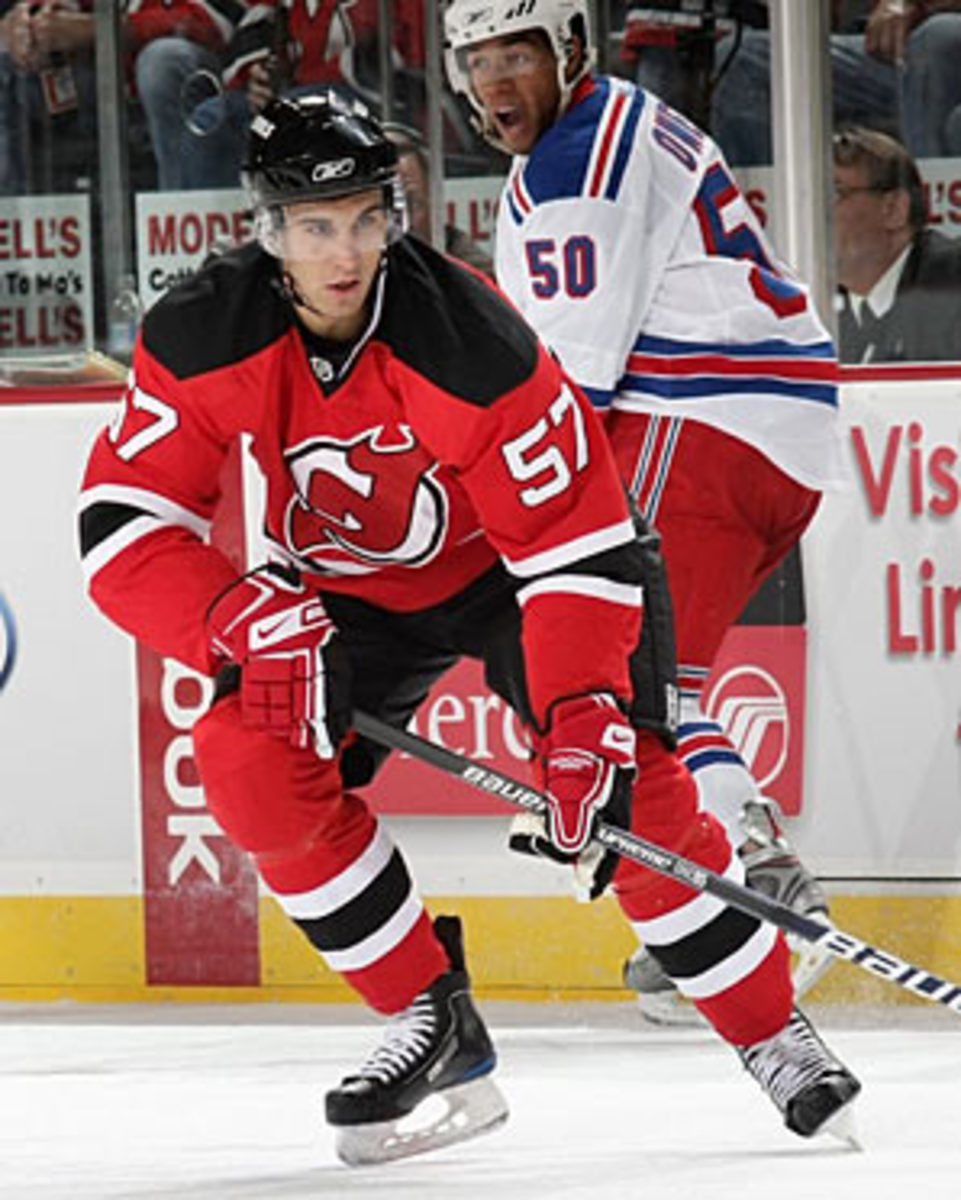A plan for ending headshots
Given the paucity of coverage in the U.S. for hockey not played under the NHL umbrella, there's a chance you've not heard of Patrice Cormier's antics in the Quebec Major Junior Hockey League or Zack Kassian's in the Ontario Hockey League.
Cormier, a third-round pick of the Devils (2008) who captained Canada's team in the recent World Junior Championships, is facing a long-term suspension for his flying-elbow run atMikael Tam that left Tam convulsing on the ice and rushed to hospital. Kassian, a first-round pick of the Sabres (2009), left his feet to connect with the head of Matt Kennedy, who suffered a concussion and required numerous stitches to close facial wounds.
I won't offer up another "this must end" column decrying the horrors of blows to the head at every level of the sport. I and many of my colleagues in the hockey-writing community have been decrying them for well over a decade. Next to nothing has changed. Instead, let me present the Jim Kelley Four Point Plan to bring pressure on hockey at every level.
One: Get some leadership at NHLPA headquarters and make the players' voices heard. It's not as if players are ducking this issue. Numerous polls indicate they want these hits out of the game. Paul Kelly, the recently ousted executive director, spoke to the issue on several occasions during his brief tenure and went so far as to suggest a seemingly workable rule change. Active players and coaches (Ryan Miller of the Sabres and coach Ron Wilson of the Maple Leafs come immediately to mind) have talked passionately about putting an end to seemingly senseless (though hardly random) acts of unmitigated violence. The PA could stop the carnage if it really made an effort. It takes leadership and, right now, there simply isn't any.
Two: Organize ex-players to speak to the dangers and consequences of blows to the head and from behind. Several, including Pat LaFontaine and Keith Primeau, have done so, but they, too, need more organized effort. The NHL Alumni Association should round up as many suffering ex-players as possible and help them get their message across. Think about it: When was the last time a between-periods intermission was devoted to the problems ex-players are having with their thought processes and overall health? Injured players can get access to the airways and participate in panel discussions with neurological experts. All they need is an organized body to help make it happen. Injured NFL players have done this and are starting to see results.
Three: Start a version of Mothers Against Drunk Driving (MADD). This is more of a grass-roots plan aimed at the junior leagues, but starting there and being effective can have a spin-up effect to the pros. If enough moms threatened coaches and leagues that unless they change their ways, their sons will be off to university or a less dangerous organization, the outcome would be chilling. David Branch, the Commissioner of the OHL and President of the CHL, has issued massive suspensions and tweaked rules to answer the charge that junior hockey is an unsafe place for the kids of concerned parents. Branch has gone so far as to suspend a player for life and he's handed Kassian 20 games as a repeat offender.
Four: Get the legal system involved. I don't advocate -- for the most part -- bringing the police in on these cases because it's a slippery slope. The game is physical and, more importantly, players accept that serious life-changing and debilitating injury can occur. But it's a different case when a player who has suffered a blow that is clearly against the rules files suit. The very idea that a player can't willingly avoid delivering a blow to the head is up for question just by watching video of Kassian and Cormier, both of whom went out of their way and outside the norm at any reasonable level to commit their infractions. Some have made the argument that Kassian and Cormier did what they did to "round-out their resumes." When you consider that the price for such hits in the NHL is usually a two- or three-game suspension, one can hardly blame them.
A league that gives penalties for shooting a puck over the glass and hands out a suspension for speaking badly of ex-girlfriends can't find its way to a rule that protects players during or after hockey? Find me a jury that will buy that argument. A solid court case that exposes the concept that decimating even the most talented players is part of the "cost of doing business" will have a much greater impact. Who wouldn't like to see an owner or commissioner explain in open court why it's impossible to make a rule outlawing blows to the head when the NFL, arguably the most violent league to hit the big stage since the lions took on the Christians, has done so with certifiable accomplishment.
This is a fight the media can't win. It may be one that players, parents and people who really care can.






